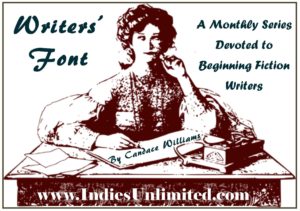 The best way to choose viewpoint is to ask yourself whose story or scene it is. Once you know who the story is about it’s safe to assume that most of the story will be told from that character’s viewpoint, either in first person “I” narrator, or third person “she or he” narrator.
The best way to choose viewpoint is to ask yourself whose story or scene it is. Once you know who the story is about it’s safe to assume that most of the story will be told from that character’s viewpoint, either in first person “I” narrator, or third person “she or he” narrator.
There are several kinds of viewpoint. “First Person” is written with an “I” narrator, as if the story happened to you. “Third Person” limited is written in third person, but limited to a single point of view. This is the viewpoint chosen for most short stories. Most girl-in-danger stories are written in first person limited, while Harlequin and most genre romances are written in third person limited. In either case “limited” means limited only to the main character’s viewpoint. The reader cannot know anything the main character doesn’t see, think, or feel. Continue reading “Basics of Viewpoint by Arline Chase”
Like this:
Like Loading...
 In June, we looked at the most common Points-of-View used in fiction today: First Person, Third-Person Limited, and Third-Person Omniscient. In July, we examined some pitfalls to avoid in mastering POV.
In June, we looked at the most common Points-of-View used in fiction today: First Person, Third-Person Limited, and Third-Person Omniscient. In July, we examined some pitfalls to avoid in mastering POV.